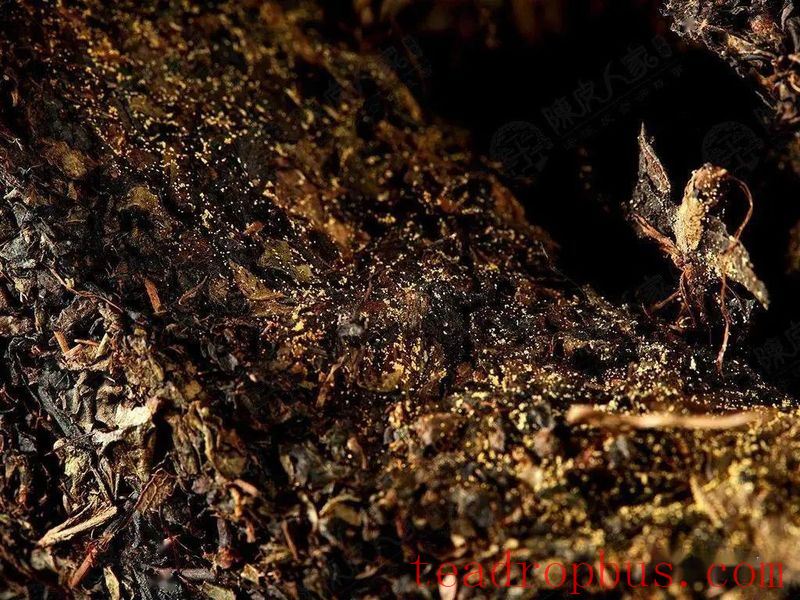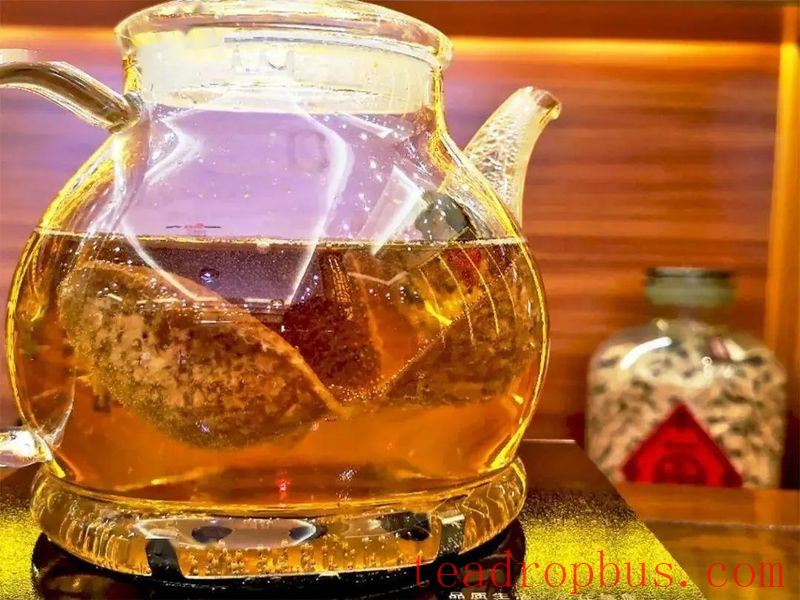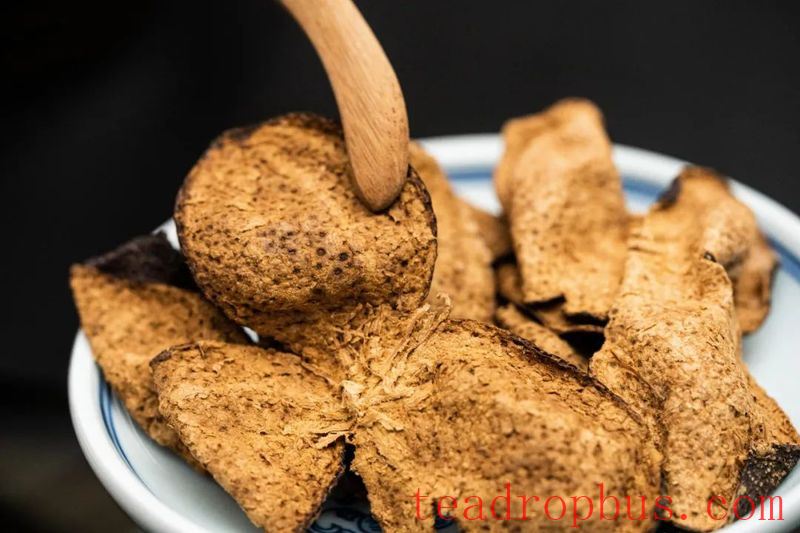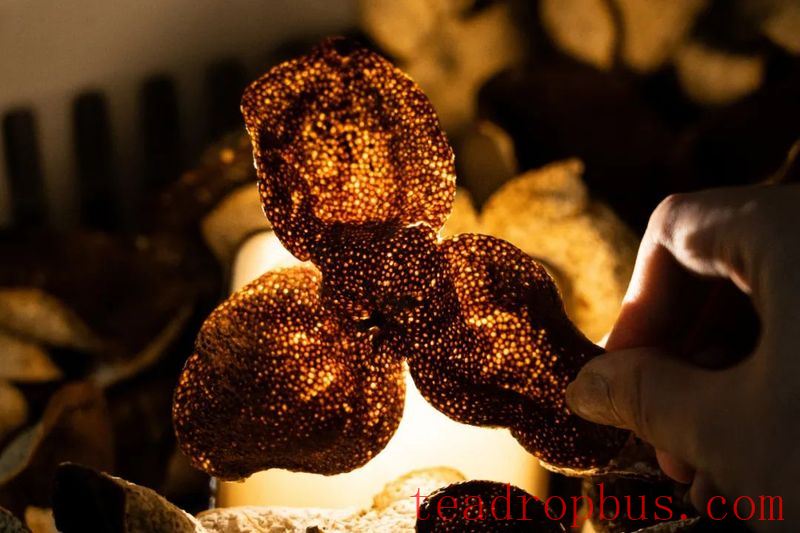Often hear that Xinhui preserved orange peel and Ahnua dark Tea are the perfect match, as both become richer with age. When combined, they have excellent Health benefits, and their nature is very mild, making them suitable for daily health consumption.

Both preserved orange peel and dark tea are aged teas. The older the preserved orange peel, the more medicinal its aroma, which lingers continuously. The fragrance of Ahnua dark tea (Fuzhuan tea) isn't overpowering, but it's rich in content, dense in flavor, and has a sweet aftertaste.

When cooked together, the rich aromas of the preserved orange peel and dark tea are fully released in boiling water. The complementary scents and flavors provide drinkers with a dual satisfaction of smell and taste.
Medical texts record “a hundred-year-old preserved orange peel is like ginseng a thousand years old” and “an ounce of preserved orange peel is worth an ounce of gold, a hundred-year-old preserved orange peel is more valuable than gold.” Xinhui preserved orange peel is a renowned health product worldwide.
In the COVID-19 epidemic, Xinhui preserved orange peel appeared in five versions of the Traditional Chinese medicine trial program, further enhancing its reputation as a health product worldwide.

Long-time drinkers of Ahnua dark tea know that if you regularly consume preserved orange peel, you've already reached the pinnacle of Tea drinking. Without a certain level of appreciation for tea, you really can't experience the charm and depth of preserved orange peel.
Drinking Ahnua dark tea with preserved orange peel isn't enough; one must also understand the peel – how to drink it and how to Brew it. The knowledge behind this is vast and profound.
Cooking Preserved Orange Peel Dark Tea
1. Take 10-15 grams of Ahnua dark tea and 3-5 grams of Xinhui preserved orange peel. Rinse them briefly once or twice to remove surface impurities.
2. Place the preserved orange peel in a pot, add water, bring it to a boil, then add the dark tea. Simmer for two minutes without covering the pot.
3. After turning off the heat and filtering out the residue, the tea can be divided and drunk. At this point, the flavor hasn't fully developed. You can then re-boil it, cover and steep it, or slowly simmer it over low heat for a refined drinking experience. It can be brewed multiple times.
The combination of preserved orange peel and dark tea is particularly suited for cooking, but can also be first steeped and then cooked. The intertwined scents of the peel and the tea create a rich layering of flavors that linger pleasantly in the mouth after swallowing.
Cooking preserved orange peel dark tea not only promotes health but also provides a delightful taste experience, offering many benefits. Why not give it a try?

Many people mistakenly believe that the orange peels they buy and dry can be considered preserved orange peel after some time, but this notion is incorrect. If any piece of orange peel could serve as preserved orange peel, it wouldn't be so highly valued.
Preserved orange peel, a traditional Chinese medicine, is the dried mature peel of the fruit of the Citrus reticulata plant and its cultivated varieties. Its outer surface is orange-red or reddish-brown with fine wrinkles and sunken oil cavities. The inner surface is pale yellow-white, rough, with yellow-white or yellow-brown pithy vascular bundles. It is slightly hard and brittle, with a fragrant scent. Preserved orange peel tastes bitter and pungent, is warm in nature, and targets the lung and spleen meridians. It has effects such as regulating qi and strengthening the spleen, drying dampness, and transforming phlegm.